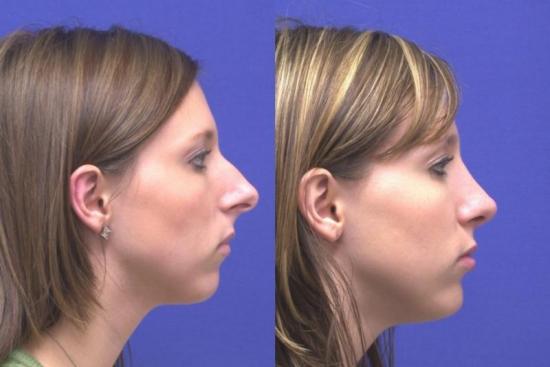Mini abdominoplasty, also known as a mini tummy tuck, is a surgical procedure that can help individuals achieve a slimmer and firmer abdomen. With a focus on targeting excess skin and fat in the lower abdomen, this procedure offers a less invasive alternative to traditional abdominoplasty. But who exactly is a candidate for mini abdominoplasty? In this blog post, we will explore the eligibility criteria for this procedure as well as the pre-operative preparations required. Additionally, we will delve into the surgical procedure itself, recovery and post-operative care, potential risks and complications, and the expected results and long-term maintenance.
What Is Mini Abdominoplasty?
Mini abdominoplasty, also known as a mini tummy tuck, is a cosmetic surgical procedure that aims to improve the appearance of the abdomen by removing excess fat and tightening the abdominal muscles. Unlike a traditional abdominoplasty, mini abdominoplasty focuses on the lower abdomen, below the belly button.
During a mini abdominoplasty, a small incision is made just above the pubic area. Through this incision, the surgeon removes excess skin and fat, and tightens the underlying muscles if necessary. The remaining skin is then pulled downward and sutured into place, creating a smoother and more toned abdomen.
Mini abdominoplasty is an ideal option for individuals who have a relatively small amount of excess skin and fat in the lower abdomen, often resulting from pregnancy or weight loss. It is important to note that mini abdominoplasty is not a weight-loss procedure, but rather a way to enhance the appearance of the abdominal area.Mini abdominoplasty offers several benefits compared to a full tummy tuck. Since the incision is smaller and the procedure is less invasive, the recovery time is typically shorter. Additionally, the scar after a mini abdominoplasty is usually smaller and easier to conceal.
| Potential Candidates for Mini Abdominoplasty: | Non-ideal Candidates for Mini Abdominoplasty: |
|---|---|
| Individuals with a small amount of excess skin and fat in the lower abdomen | Individuals with significant excess skin and fat in the entire abdominal area |
| Individuals with good overall health | Individuals with underlying health conditions that could impair healing |
| Individuals who are at or near their ideal body weight | Individuals who are significantly overweight or obese |
| Individuals who have realistic expectations for the outcome of the procedure | Individuals who do not have realistic expectations or have unrealistic goals |
Who Is A Candidate For Mini Abdominoplasty?
Mini Abdominoplasty is a surgical procedure that is becoming increasingly popular among individuals who are looking to achieve a more toned and contoured stomach. Unlike a full tummy tuck, which addresses the entire abdominal area, mini abdominoplasty focuses on the lower abdomen. This procedure is particularly suitable for people who have excess skin and fat in the lower abdominal region, but do not require extensive muscle repair.
In order to determine whether you are a candidate for mini abdominoplasty, there are several factors that need to be taken into consideration. Firstly, it is important to have realistic expectations about the outcome of the procedure. Mini abdominoplasty can improve the appearance of the lower abdomen, but it will not address other areas of the stomach or provide a significant weight loss. It is also essential to be in good overall health and have a stable weight, as significant fluctuations can affect the results of the surgery.
Furthermore, individuals who are considering mini abdominoplasty should have excess skin and fat in the lower abdominal area that has not responded to diet and exercise. This procedure is especially beneficial for women who have undergone multiple pregnancies and have loose skin or a C-section scar that they would like to address. It is important to keep in mind that mini abdominoplasty is not a substitute for weight loss or a healthy lifestyle, but rather a way to enhance the appearance of the lower abdomen.Individuals who smoke or have certain medical conditions may not be suitable candidates for mini abdominoplasty. It is important to consult with a qualified plastic surgeon who can assess your eligibility for the procedure and provide personalized recommendations.
| Potential Candidates for Mini Abdominoplasty: | Potential Non-Candidates for Mini Abdominoplasty: |
|---|---|
| Individuals with excess skin and fat in the lower abdominal region | Individuals with unrealistic expectations |
| Women who have loose skin or C-section scars | Individuals with unstable weight or significant weight loss/gain |
| Healthy individuals with no contraindicating medical conditions | Individuals with certain medical conditions or smokers |
Pre-Operative Preparation For Mini Abdominoplasty
Pre-operative preparation is an essential step before undergoing any surgical procedure, including mini abdominoplasty. This preparation ensures that the patient is in optimal health and reduces the risk of complications during and after the surgery. Mini abdominoplasty, also known as a mini tummy tuck, is a cosmetic procedure that targets the lower abdomen to remove excess fat and skin. It is ideal for individuals who have a small amount of excess skin and fat below the belly button.
Before undergoing mini abdominoplasty, it is crucial to schedule a consultation with a qualified plastic surgeon. During this consultation, the surgeon will assess your suitability for the procedure and discuss your expectations and goals. They will also review your medical history and any previous surgeries to ensure that you are a good candidate for mini abdominoplasty.
Pre-operative preparation may involve several steps, depending on your overall health and specific requirements. Your surgeon may request various medical tests, such as blood work, to evaluate your health status. It is important to provide accurate and honest information about your medical history, including any existing medical conditions, previous surgeries, and the medications you are currently taking.
- Follow any pre-operative instructions given by your surgeon, such as avoiding certain medications or supplements that can increase the risk of bleeding during the surgery.
- Quit smoking well in advance of the procedure, as smoking can impair healing and increase the risk of complications.
- Arrange for someone to accompany you on the day of surgery and assist you during the initial stages of recovery.
- Ensure that you have a comfortable and clean recovery space ready at home, including necessary supplies and medications prescribed by your surgeon.
- Avoid consuming any food or drink, as instructed by your surgeon, before the surgery to prevent complications related to anesthesia.
Apart from these general preparations, your surgeon will provide you with specific instructions tailored to your individual needs. Following these guidelines meticulously will help ensure a smooth and successful mini abdominoplasty procedure. Remember, proper pre-operative preparation plays a significant role in achieving your desired results and minimizing the risks and potential complications associated with the surgery.
| Potential Risks and Complications | Expected Results and Long-Term Maintenance |
|---|---|
| Every surgery carries some amount of risk. Complications that may arise from mini abdominoplasty include infection, bleeding, scarring, blood clots, and adverse reactions to anesthesia. However, with proper pre-operative preparation and post-operative care, the likelihood of experiencing these complications can be significantly reduced. | After the mini abdominoplasty procedure, it may take several weeks to months to see the complete results. The incisions will gradually fade, and the swelling will subside, revealing a flatter and more toned abdomen. Maintaining a healthy lifestyle, including regular exercise and a balanced diet, is crucial for long-term maintenance and to preserve the aesthetic results. |
The Surgical Procedure Of Mini Abdominoplasty
Mini abdominoplasty is a surgical procedure that is designed to improve the appearance of the lower abdomen. Unlike a traditional abdominoplasty, which addresses both the upper and lower abdomen, a mini abdominoplasty focuses solely on the area below the belly button. This procedure is ideal for individuals who have excess skin or a small amount of abdominal fat that cannot be eliminated through diet and exercise alone.
The surgical procedure of mini abdominoplasty typically begins with the administration of anesthesia to ensure the patient’s comfort throughout the operation. The surgeon will then make a small incision just above the pubic area, hidden within the natural crease of the body. Through this incision, the underlying abdominal muscles are tightened and excess skin and fat are removed.
During the procedure, the surgeon may also reposition the belly button to achieve a more aesthetically pleasing result. Once the necessary corrections have been made, the incisions are carefully closed using sutures. In some cases, drainage tubes may be inserted to help remove any excess fluid or blood that may collect during the initial healing process.
| Potential Risks and Complications | Expected Results and Long-Term Maintenance |
|---|---|
| Every surgical procedure comes with certain risks and mini abdominoplasty is no exception. Possible risks include infection, bleeding, scarring, and adverse reactions to anesthesia. It is important for patients to closely follow their surgeon’s pre and post-operative instructions to minimize these risks. | Following a successful mini abdominoplasty, patients can expect a flatter, smoother abdomen with improved muscle tone. The results of the procedure are generally long-lasting as long as the individual maintains a healthy lifestyle and avoids significant weight fluctuations. Regular exercise and a balanced diet are essential for maintaining the optimal outcome. |
If you are considering mini abdominoplasty, it is crucial to consult with a qualified plastic surgeon who can assess your specific needs and determine if you are a suitable candidate for the procedure. They will inform you about the benefits, risks, and expected outcomes associated with mini abdominoplasty. Remember, every individual is unique, and what works for one person may not be the best option for another.
Recovery And Post-Operative Care
After undergoing a mini abdominoplasty, a crucial aspect of the healing process is recovery and post-operative care. This phase plays a significant role in ensuring optimal results and minimizing potential risks and complications. It is essential to follow the instructions provided by your surgeon for a smooth recovery.
First and foremost, it is recommended to have someone accompany you during the initial days of recovery. This is particularly important as you may experience some discomfort and may require assistance with daily activities. Your surgeon will prescribe pain medication to manage any post-operative pain or discomfort.
During the recovery period, it is crucial to maintain proper hygiene and care for the surgical incisions. Your surgeon will advise you on how to clean and dress the incisions, as well as provide instructions on any necessary drainage tubes or bandages. It is important to keep the incisions clean and dry to prevent infection.Furthermore, it is essential to follow a healthy diet during the recovery phase to support the healing process. Your surgeon may provide dietary guidelines to promote faster healing and reduce the risk of complications. Be sure to consume foods rich in vitamins and minerals and drink plenty of water to stay hydrated.
| Potential Risks | Complications |
|---|---|
| Although uncommon, there are potential risks associated with mini abdominoplasty, just like any surgical procedure. These risks can include infection, bleeding, scarring, and adverse reactions to anesthesia. However, with proper post-operative care and following your surgeon’s instructions, you can minimize these risks significantly. | In some cases, complications may arise during the recovery period. These can include seroma (fluid buildup), hematoma (collection of blood), or issues with wound healing. Notify your surgeon immediately if you experience any unusual symptoms or complications, such as prolonged pain, excessive swelling, or fever. Your surgeon will provide appropriate treatment to address these concerns. |
It is important to note that everyone’s recovery process may vary, and it is crucial to consult with your surgeon for personalized guidance and care. Follow-up appointments with your surgeon will allow them to monitor your progress and address any concerns you may have during the recovery phase. Listening to your body and allowing yourself ample time to heal is key to achieving the best possible results from your mini abdominoplasty.
Potential Risks And Complications
When considering any surgical procedure, it is important to be aware of the potential risks and complications involved. Mini abdominoplasty, also known as a mini tummy tuck, is a popular cosmetic surgery option for individuals who want to remove excess fat and skin in the lower abdomen. While this procedure can provide excellent results, it is vital to understand the possible risks before making a decision.
One potential risk of mini abdominoplasty is infection. Like any surgical procedure, there is always a risk of developing an infection at the incision site. To mitigate this risk, it is crucial to follow the surgeon’s post-operative care instructions carefully and keep the incision area clean and dry. If you notice any signs of infection such as redness, swelling, or pus, it is important to contact your surgeon immediately.
Another possible complication of mini abdominoplasty is the formation of blood clots. This is more common in individuals with a history of blood clotting disorders or those who are immobile for an extended period following the surgery. To prevent blood clots, your surgeon may advise you to wear compression stockings, move around regularly, and take blood-thinning medications if necessary.
Additionally, there is a risk of developing fluid accumulation, known as seroma, after mini abdominoplasty. Seromas can occur when fluid collects under the skin near the incision site. To reduce the risk of seroma formation, your surgeon may place drains during the procedure to facilitate fluid drainage. It is essential to follow your surgeon’s instructions regarding the care and removal of these drains to minimize the likelihood of seromas.
| Potential Risks | Potential Complications |
|---|---|
| InfectionBlood clotsSeroma formation | ScarringNumbnessDelayed wound healing |
Scarring is also a risk associated with mini abdominoplasty. Although the surgeon will make the incision as inconspicuous as possible, there will still be a visible scar. The extent of scarring can vary depending on individual factors such as skin type and genetics. However, with proper care and following your surgeon’s instructions for scar management, the scar can fade over time.
Some patients may experience temporary or permanent numbness in the abdominal area after mini abdominoplasty. This occurs due to nerve damage during the surgery. While most cases of numbness resolve on their own within a few months, it is essential to discuss any persistent numbness with your surgeon.
Delayed wound healing is another potential complication of mini abdominoplasty. Factors such as smoking, poor nutrition, and certain medical conditions can impede the healing process. It is crucial to follow your surgeon’s pre-operative and post-operative instructions to optimize wound healing and minimize the risk of complications.
It is important to remember that every surgical procedure carries risks, and mini abdominoplasty is no exception. However, by choosing a skilled and experienced surgeon, carefully following all pre-operative and post-operative instructions, and maintaining realistic expectations, the potential risks and complications can be minimized, and you can achieve your desired results with confidence.
Expected Results And Long-Term Maintenance
When it comes to undergoing any type of surgery, it is important to have realistic expectations and understand the expected results and long-term maintenance involved. The same holds true for mini abdominoplasty. So, what can you expect from this procedure and how can you maintain the results in the long run?
First and foremost, it’s important to understand that the overall outcome of mini abdominoplasty varies from person to person. While it is designed to address excess skin and fat in the lower abdomen, the specific results you can achieve depend on various factors such as your body’s natural healing process and individual anatomy. It’s best to consult with a qualified plastic surgeon who can assess your unique situation and provide you with a realistic expectation of what can be achieved.
Once the mini abdominoplasty procedure is successfully completed, it is crucial to follow the post-operative care instructions provided by your surgeon. This includes proper wound care and any necessary medication. Long-term maintenance often involves adopting a healthy lifestyle, including regular exercise and a balanced diet, to ensure the longevity of the results.Regular physical activity, such as cardiovascular exercises and strength training, helps maintain muscle tone and overall body shape. Incorporating exercises that target the core muscles can also help strengthen the abdominal area and provide additional support post-surgery.Avoiding excessive weight gain is also essential for maintaining the results of mini abdominoplasty. While the procedure removes excess skin and fat, significant weight gain can stretch the remaining skin and compromise the results. It’s important to maintain a healthy weight through a balanced diet and portion control.
| Do: | Don’t: |
|---|---|
| Adopt a balanced diet rich in fruits, vegetables, lean proteins, and whole grains. | Indulge in excessive sugary and processed foods, which can contribute to weight gain and compromise the outcome. |
| Drink plenty of water to stay hydrated and promote overall skin health. | Consume excessive amounts of alcohol and caffeine, as they can dehydrate the body and negatively affect the skin’s elasticity and appearance. |
| Follow up with your plastic surgeon for regular check-ups and any necessary touch-up procedures, if advised. | Ignore any potential complications or changes in the surgical site and delay seeking medical attention. |
It’s important to remember that individual experiences may vary, and it may take some time for the full results of mini abdominoplasty to become evident due to the healing process. Patience and adherence to the recommended post-operative care and long-term maintenance guidelines are key to achieving and maintaining the best possible outcome.



Leave a comment